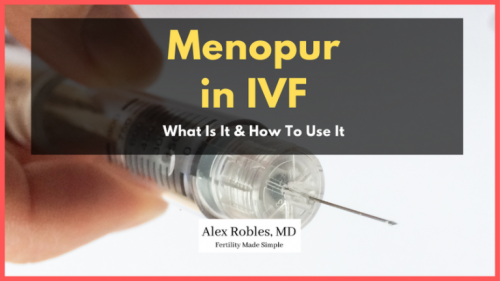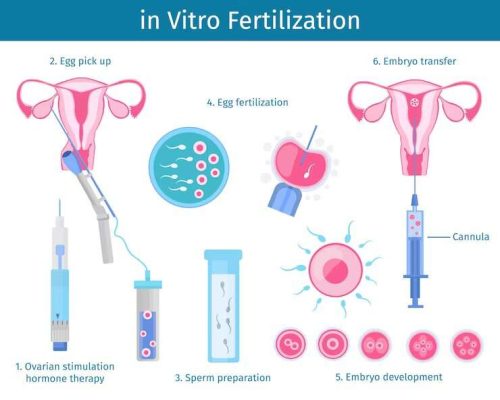How Many Follicles Do You Need for IVF Success?
If you’re diving into the world of in vitro fertilization (IVF), you’ve probably heard the term “follicles” thrown around a lot. Maybe you’re wondering what they are, why they matter, or—most importantly—how many you need to make your IVF journey a success. It’s a big question, and one that can feel overwhelming when you’re just starting out. Don’t worry, though—I’ve got you covered. This guide will walk you through everything you need to know about follicles and IVF, from the basics to the nitty-gritty details that don’t always make it into the headlines. Whether you’re prepping for your first cycle or troubleshooting a past one, you’ll find answers here that are clear, practical, and grounded in the latest insights.
Let’s start with the big picture: follicles are tiny fluid-filled sacs in your ovaries, each holding an immature egg. In IVF, the goal is to grow as many healthy follicles as possible, retrieve the eggs inside, and turn them into embryos. But here’s the catch—there’s no one-size-fits-all number. Success depends on a mix of quantity, quality, and your unique situation. So, how do you figure out what’s right for you? Stick with me, and we’ll break it down step by step.
What Are Follicles, and Why Do They Matter in IVF?
Picture your ovaries as a garden. Inside, there are thousands of tiny seeds—your eggs—each tucked inside its own little pod, called a follicle. Every month, in a natural cycle, a handful of these follicles start to grow, but usually only one makes it to the finish line, releasing an egg during ovulation. The rest? They fade away. IVF flips this script. With the help of fertility drugs, doctors encourage your ovaries to grow multiple follicles at once, giving you more eggs to work with. More eggs mean more chances to create embryos, and ultimately, a better shot at pregnancy.
Why does this matter? Because IVF is a numbers game—to a point. The more mature eggs you can retrieve, the more embryos you might get, and the higher your odds of finding a healthy one to transfer. But it’s not just about racking up a big tally. The quality of those eggs, and how well they fertilize, is just as crucial. Think of it like baking: you need enough ingredients to make a cake, but if the flour’s gone bad, the whole thing flops.
Research backs this up. Studies show that retrieving 10-15 eggs in a single IVF cycle often leads to the best live birth rates for women under 35—around 40-50%, according to the Society for Assisted Reproductive Technology (SART). But go too high, say over 20, and you risk complications like Ovarian Hyperstimulation Syndrome (OHSS), which can make you feel bloated, sick, or worse. Too few, like 1-3, and your chances drop because there’s less to work with. So, follicles are the starting line, but they’re not the whole race.
How Many Follicles Should You Aim For?
So, what’s the magic number? Well, there isn’t one—sorry to burst that bubble! Fertility experts often aim for 8-15 mature follicles before egg retrieval, but the “ideal” depends on your age, health, and fertility history. Let’s break it down by what doctors typically look for and why.
For most women under 38, clinics like to see at least 4 mature follicles (those around 18-20mm in size) before triggering ovulation with a hormone shot. Why 4? It’s a sweet spot—enough to give you a decent number of eggs (usually 3-6) without overloading your system. If you’re younger, say under 35, 10-15 follicles might be the goal, since your egg quality is likely higher, and more eggs boost your odds. Older women, over 40, might be thrilled with 3-5, because egg quantity and quality naturally decline with age.
Here’s a quick snapshot based on real-world data:
| Age Group | Target Follicles | Average Eggs Retrieved | Live Birth Rate (per cycle) |
|---|---|---|---|
| Under 35 | 10-15 | 8-12 | 45-50% |
| 35-37 | 8-12 | 6-10 | 35-40% |
| 38-40 | 6-10 | 4-8 | 25-30% |
| Over 40 | 3-6 | 2-5 | 10-15% |
Source: Adapted from CDC and SART 2021 data
But here’s where it gets personal: if you’ve got a condition like polycystic ovary syndrome (PCOS), you might grow 20+ follicles easily, but that doesn’t mean they’re all winners. On the flip side, if your ovarian reserve is low (think fewer than 5 antral follicles on an ultrasound), even 3 mature ones could be a victory. The trick is balancing quantity with safety and quality—your doctor will tweak your meds to hit that mark.
What Happens If You Don’t Get Enough?
Say your ultrasound shows only 2-3 follicles growing. It’s not game over, but it might mean a tougher road. Fewer follicles usually mean fewer eggs, and that can limit your embryo options. Some clinics might cancel the cycle if the count’s too low—typically under 3—because the odds of success drop below 10-15%. But don’t lose hope: a small study from 2023 found that women with just 1-2 high-quality eggs still had a 20% chance of a live birth if everything else lined up (like a healthy uterus and good sperm).
Too Many Follicles: A Hidden Risk
On the flip side, too many follicles—think 25 or more—can spell trouble. It’s not just about OHSS (though that’s a biggie, affecting 1-5% of cycles). Overstimulation can also stretch your ovaries thin, lowering egg quality. A 2024 study from Imperial College London suggested that triggering ovulation when most follicles are 13-18mm (not just the biggest ones at 20mm) might yield more mature eggs without pushing into risky territory. It’s a tweak not every clinic uses yet, but it’s worth asking about.
The Follicle Journey: From Antral to Mature
To really get this, let’s follow the follicle’s path in IVF. It starts with antral follicles—those little resting pods you can see on an early ultrasound, usually 2-9mm. They’re like a sneak peek at your ovarian reserve, or how many eggs you’ve got in the tank. A count of 15-30 antrals is golden; under 10, and your doc might adjust your meds or expectations.
Once you start stimulation with drugs like follicle-stimulating hormone (FSH), those antrals grow. Over 8-14 days, you’ll pop into the clinic for ultrasounds and blood tests to track their size. When they hit 18-20mm, they’re “mature” and ready for the trigger shot (usually hCG) to release the eggs. Not every follicle makes it—some stall out, others don’t have viable eggs. On average, 70-80% of mature follicles yield an egg, but that varies.
Here’s a step-by-step look at the process:
- Day 1-3: Baseline Check
An ultrasound counts your antral follicles. This sets the stage—low counts might mean higher FSH doses; high counts might mean a gentler approach. - Day 4-12: Stimulation
Daily injections coax those follicles to grow. Ultrasounds every few days watch their progress—10mm, 15mm, then the magic 18-20mm. - Trigger Time
When enough follicles hit the target size, you get the trigger shot. Timing’s key—too early, and the eggs aren’t ready; too late, and you might ovulate naturally, losing them. - Egg Retrieval
About 36 hours later, a needle guided by ultrasound scoops out the eggs. Each mature follicle gets a shot at delivering one.
This dance is delicate, and your doctor’s watching every move. Too few follicles growing? They might up your dose. Too many? They’ll dial it back or even cancel to avoid OHSS.
What Affects Your Follicle Count?
Your follicle count isn’t random—it’s shaped by a bunch of factors. Knowing these can help you and your doctor fine-tune your plan.
- Age: The big one. At birth, you’ve got about 1-2 million eggs. By puberty, it’s down to 300,000-500,000. By 35, that drops to 25,000 or so, and the decline speeds up. Fewer eggs mean fewer follicles to stimulate.
- Ovarian Reserve: Measured by antral follicle count (AFC) and anti-Müllerian hormone (AMH) levels. High AMH (over 2 ng/mL) and AFC (15-30) signal a robust reserve; low numbers (AMH under 1, AFC under 5) suggest a tougher road.
- Health Conditions: PCOS can flood you with follicles, but many might be immature. Endometriosis or past ovarian surgery might shrink your reserve.
- Lifestyle: Smoking cuts egg quality and quantity—studies show smokers need higher FSH doses and get fewer eggs. Stress and poor diet might play a role too, though the data’s less clear.
- Med Protocol: A “long protocol” with GnRH agonists might grow more follicles than a “short protocol” with antagonists, but it’s not one-size-fits-all.
Take Sarah, a 32-year-old I know. She had an AFC of 18 and AMH of 2.5—solid numbers. With a standard dose of FSH, she grew 12 follicles, retrieved 9 eggs, and got 5 embryos. Compare that to Lisa, 39, with an AFC of 6 and AMH of 0.8. Even with maxed-out meds, she got 4 follicles and 2 eggs. Age and reserve made the difference.
Quick Quiz: What’s Your Follicle Potential?
Answer these to get a rough idea (talk to your doc for the real deal!):
- Are you under 35? (✔️ Yes = higher potential; ❌ No = might be lower)
- Do you have regular periods? (✔️ Yes = good sign; ❌ No = could signal issues)
- Ever been told you have PCOS? (✔️ Yes = more follicles possible; ❌ No = typical range)
- Smoke or have a high-stress life? (✔️ No = better odds; ❌ Yes = might hurt)
Score mostly ✔️? You’re likely in a good spot. More ❌? Don’t panic—your clinic can adjust.
Quality vs. Quantity: The Real IVF Game-Changer
Here’s a truth bomb: 15 follicles don’t guarantee success if the eggs inside are duds. Quality often trumps quantity, especially as you age. A 2023 study in Fertility and Sterility found that women over 38 with 5 high-quality eggs (based on genetic screening) had better odds than those with 15 untested ones. Why? Older eggs are more likely to have chromosomal glitches, which tank embryo viability.
So, how do you boost quality? You can’t control age, but you can tweak other stuff:
- Nutrition: Load up on antioxidants—think berries, nuts, and leafy greens. A 2022 trial showed women on a Mediterranean diet had 15% higher egg quality scores.
- Supplements: CoQ10 (200-600 mg daily) might help, especially over 35. Research suggests it supports egg energy production, though it’s not a miracle fix.
- Sleep: Aim for 7-9 hours. Poor sleep messes with hormones like FSH, which follicles need to grow.
- Stress: Yoga or mindfulness won’t grow more follicles, but they might keep your body from fighting the meds. A small 2024 study linked lower cortisol to better egg maturation.
Case in point: My friend Jen, 36, had 8 follicles but focused hard on diet and sleep. She got 6 eggs, 4 embryos, and a baby on her first transfer. Quality mattered.
When Follicles Don’t Cooperate: Troubleshooting Tips
Sometimes, despite your best efforts, follicles don’t play ball. Maybe you’re a “poor responder” (fewer than 4-5 follicles despite high-dose meds) or an “over-responder” (20+ and risking OHSS). Here’s what to do:
Poor Response
- Switch Protocols: A microdose flare protocol (low-dose GnRH agonist + FSH) might wake up sleepy ovaries. A 2023 study saw a 10% bump in egg yield for poor responders.
- Add Supplements: DHEA (25 mg daily) could help if your reserve’s low—some data shows a 5-10% increase in follicle growth after 6-8 weeks.
- Consider Mini-IVF: Uses lower doses for fewer, higher-quality eggs. It’s gentler and cheaper, with a 15-20% success rate for older women.
Over-Response
- Freeze All: If OHSS looms, retrieve eggs but freeze embryos instead of transferring fresh. It cuts risk and keeps success rates steady.
- Adjust Trigger: A GnRH agonist trigger (not hCG) can lower OHSS odds by 50%, per a 2024 review.
- Monitor Closely: Daily ultrasounds after day 8 can catch runaway growth early.
Real talk: My cousin Mia, 29 with PCOS, hit 28 follicles her first round. Her doc switched to a freeze-all plan, and she avoided OHSS—and got pregnant later with a frozen transfer.
The Emotional Side: Coping with Follicle Counts
Let’s be honest—watching follicle numbers can feel like an emotional rollercoaster. A low count might make you feel defeated; a high one might spark anxiety about complications. It’s normal to obsess over those ultrasound screens, but here’s a tip: focus on what you can control. Eat well, rest, and trust your team. One woman I know kept a “follicle journal,” tracking sizes and her feelings each day. It helped her feel less helpless—and she swears it kept her sane through two cycles.
Poll: How Do You Handle Follicle Stress?
- A) I research everything and ask my doctor a million questions.
- B) I lean on friends or support groups.
- C) I try to distract myself with Netflix or hobbies.
- D) I just roll with it—what happens, happens.
Drop your answer in your head (or share with a friend!). No wrong moves here—just what works for you.
Beyond Follicles: What Else Impacts IVF Success?
Follicles are huge, but they’re not the whole story. Here’s what else plays a role:
- Sperm Quality: Even perfect eggs need solid sperm. Low count or motility can cut fertilization rates by 20-30%.
- Uterine Health: A thin lining (under 7mm) drops implantation odds. A 2023 study found progesterone supplements boosted success by 15% in these cases.
- Embryo Grading: Not all embryos are equal. A “5AA” blastocyst has a 60%+ shot at implanting; a “3BC” might be under 30%.
- Lifestyle: Obesity (BMI over 30) lowers success by 10-15%, per CDC data. Dropping 5-10% of body weight can flip that.
Think of follicles as the raw materials—everything else is how you build the house.
New Research: What’s Changing the Follicle Game?
IVF’s always evolving, and follicles are at the heart of some cool updates. Here are three fresh angles you won’t find in every article:
- AI-Powered Timing: A 2025 study from Imperial College used AI to analyze 19,000 IVF cycles. They found triggering when most follicles hit 13-18mm (not just the lead ones at 20mm) upped mature egg yield by 12%. Some clinics are testing this now—ask yours if they’re on board.
- Follicle Size Sweet Spot: Older research obsessed over 18-20mm follicles, but new data hints 15-17mm might be just as good for egg maturity, with less OHSS risk. It’s a shift that could mean safer cycles.
- Priming with Growth Factors: A small 2024 trial tested “ovarian priming” with growth factors like IGF-1 before stimulation. Women with low AFC (under 5) saw a 20% jump in follicle growth. It’s experimental, but promising.
These aren’t mainstream yet, but they show how science is digging deeper into follicle potential. Stay curious—your next cycle might benefit.
Your Follicle Action Plan: Practical Steps
Ready to take charge? Here’s how to optimize your follicle game:
- Prep Early: Three months before IVF, start a fertility-friendly diet (think salmon, spinach, walnuts). Add CoQ10 if your doc’s cool with it.
- Ask Questions: At your baseline ultrasound, ask: “What’s my AFC? How will that guide my meds?” Knowledge is power.
- Track Your Cycle: Keep a log of symptoms—bloating, fatigue, mood swings. It’ll help you spot patterns and talk to your doctor.
- Stay Flexible: If your follicle count’s off, don’t panic. Discuss mini-IVF, donor eggs, or a freeze-all tweak with your team.
- Support System: Line up a friend or group to vent to. IVF’s a marathon, not a sprint.
Checklist: Your Follicle To-Do List
- ✔️ Book a baseline ultrasound to check AFC.
- ✔️ Review your AMH results with your doctor.
- ✔️ Start a healthy habit (e.g., 30-min walks daily).
- ❌ Skip smoking or excess caffeine—both hurt follicles.
- ✔️ Schedule a follow-up if your first cycle flops.
Wrapping Up: Follicles Are Just the Start
So, how many follicles do you need for IVF? It’s less about hitting a perfect number and more about finding your perfect balance. For some, 5 fantastic follicles beat 15 so-so ones. For others, 12 is the charm. Age, health, and a sprinkle of luck all play in, but the real key is working with your doctor to make the most of what you’ve got.
This isn’t a solo journey—your clinic’s got tools, science has new tricks, and you’ve got resilience. Whether it’s tweaking protocols, leaning on lifestyle boosts, or riding the emotional waves, every step gets you closer. Got 3 follicles? Great. Got 20? Awesome. It’s not the count that defines you—it’s what you do with it.
What’s your follicle story? Maybe you’re prepping for round one, or maybe you’ve got a tip to share. Either way, you’re not alone in this. Keep going—you’ve got this.




